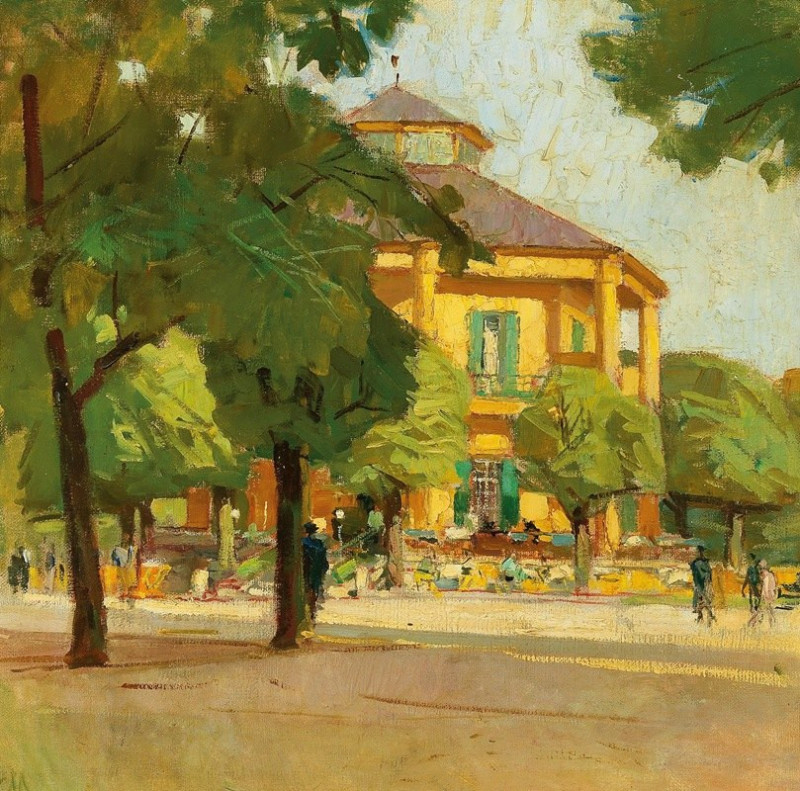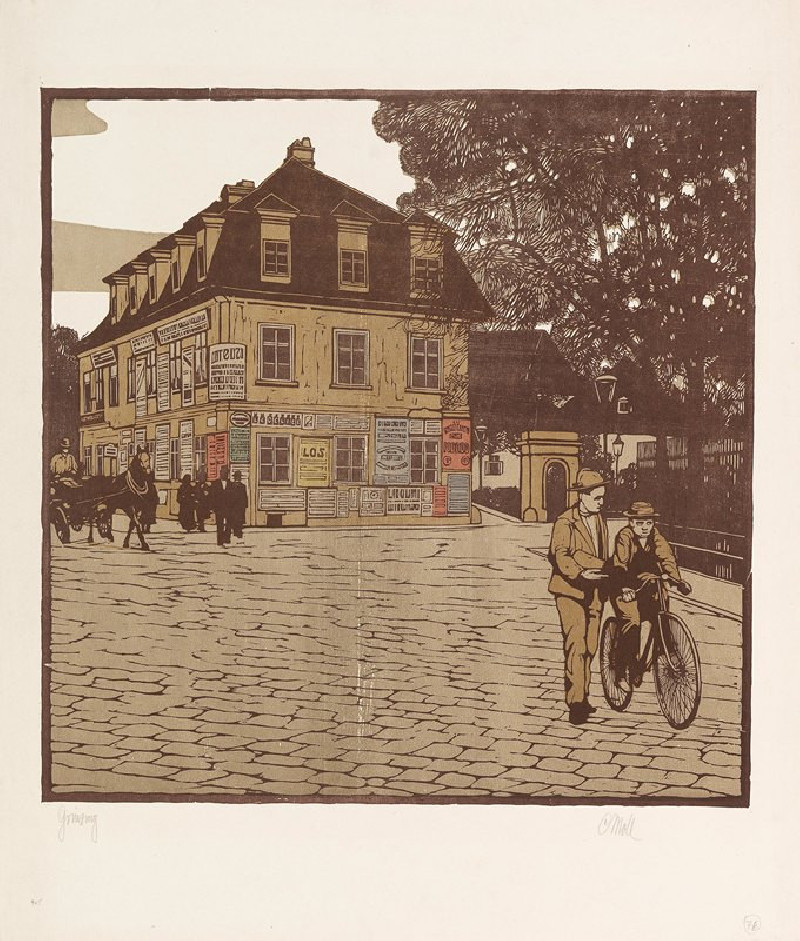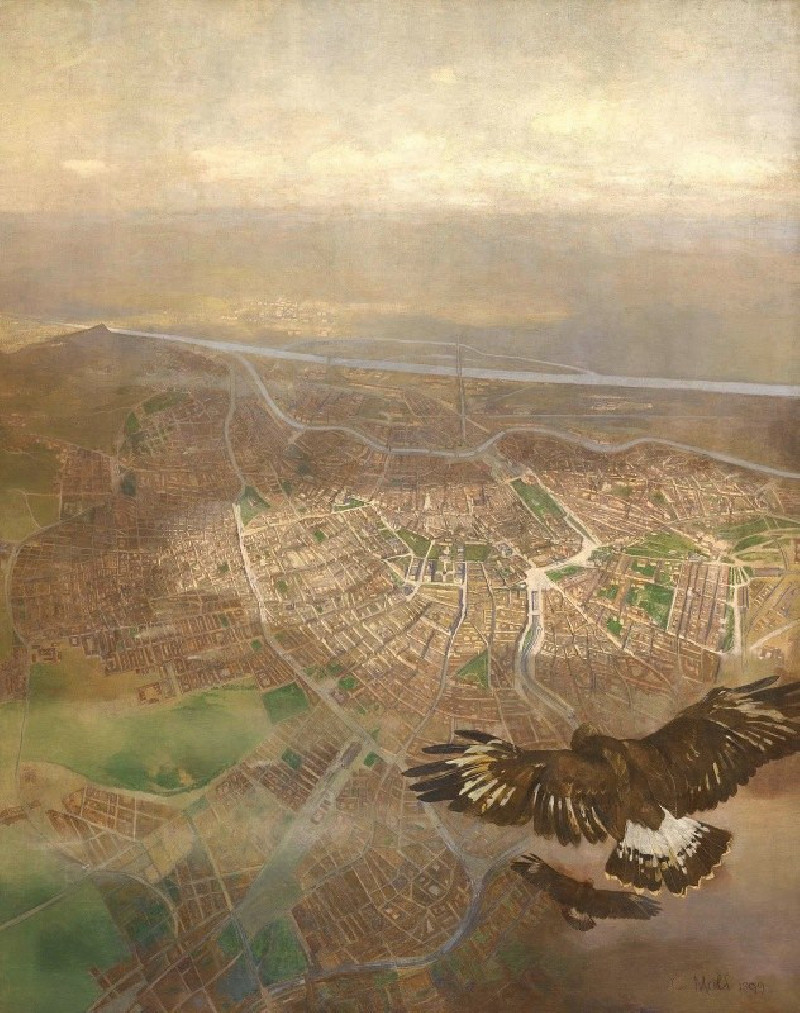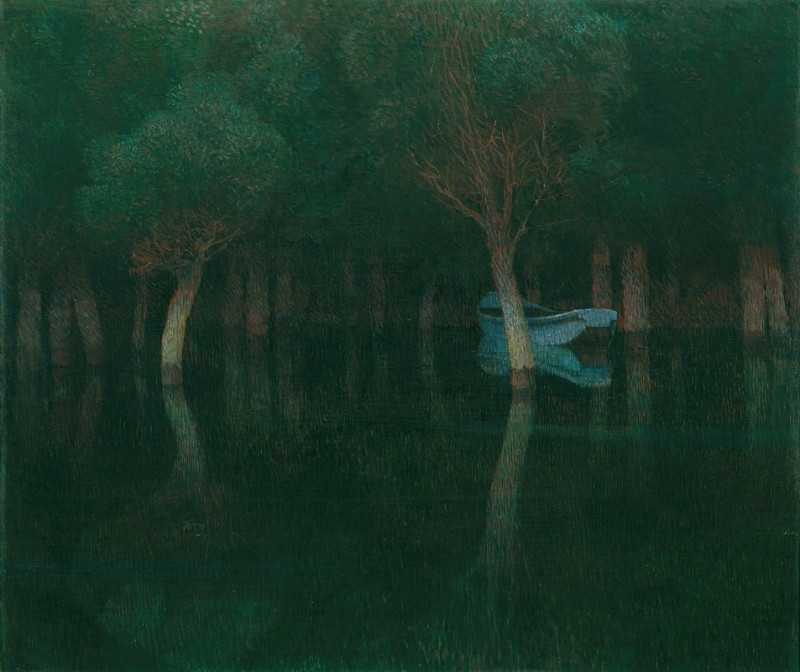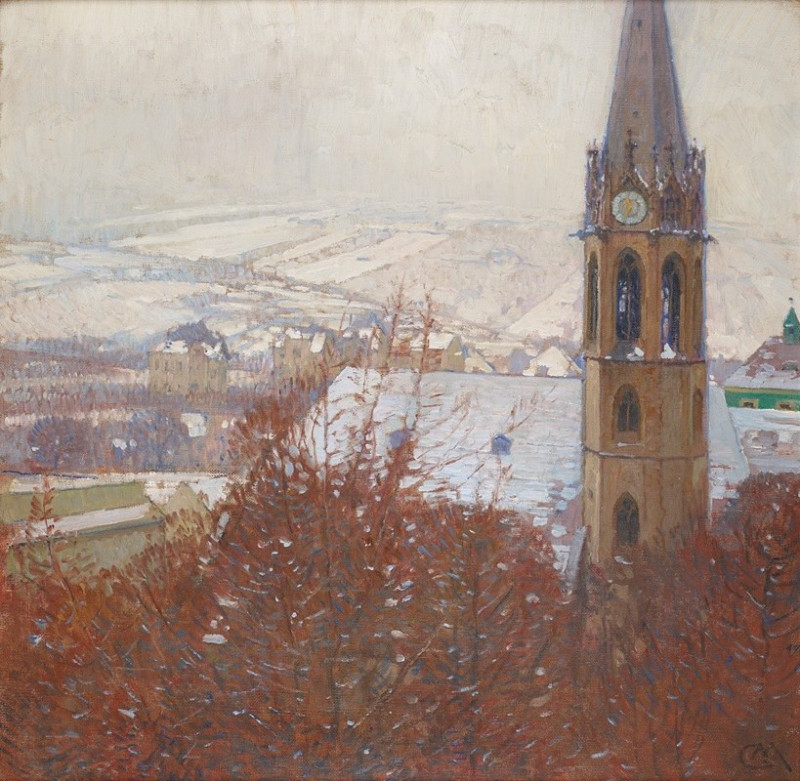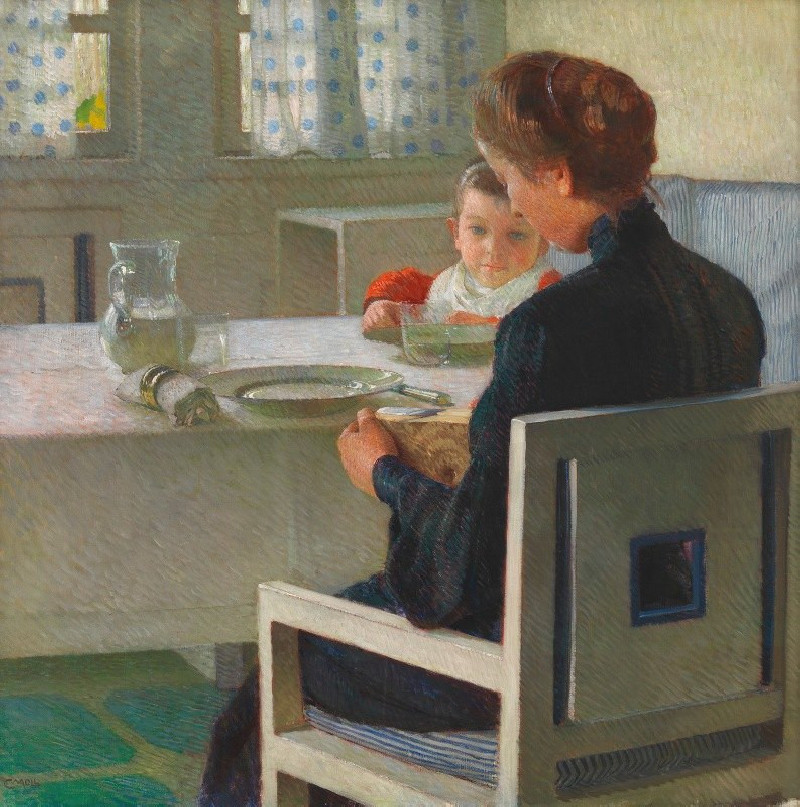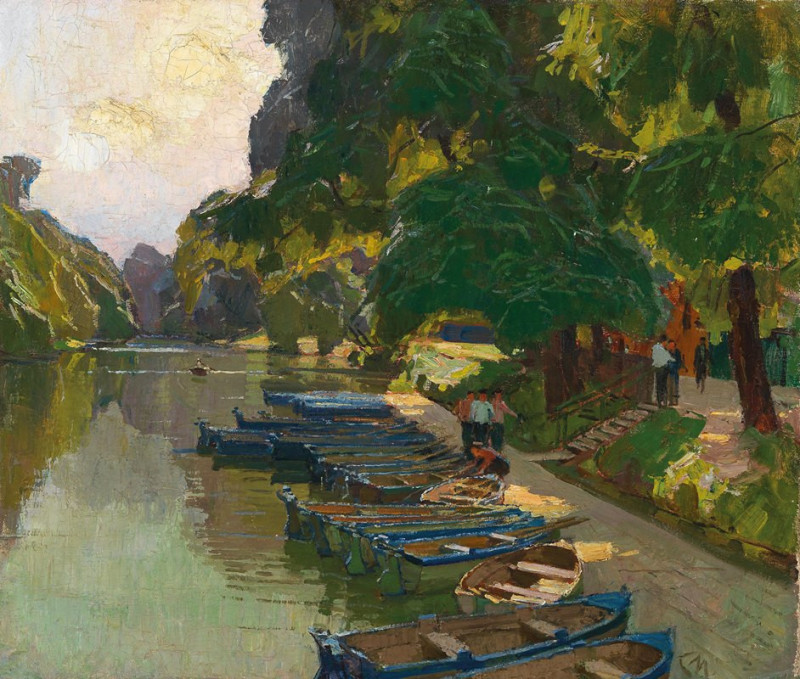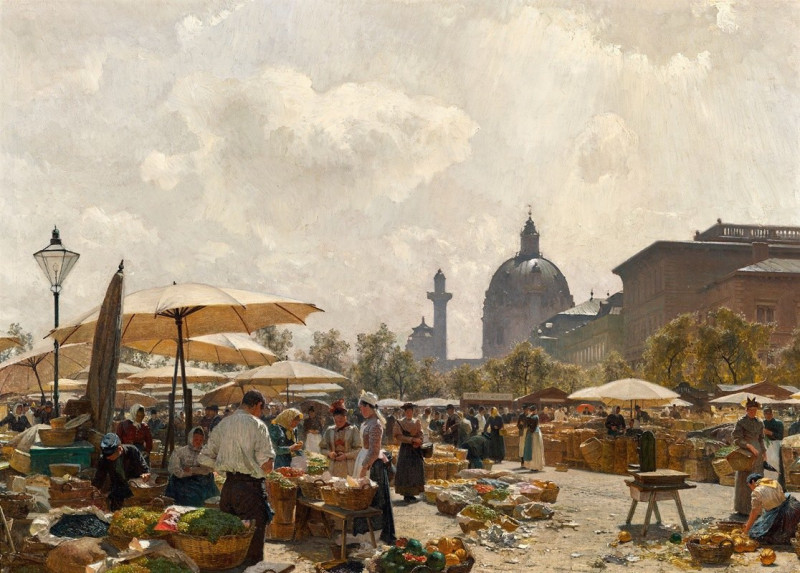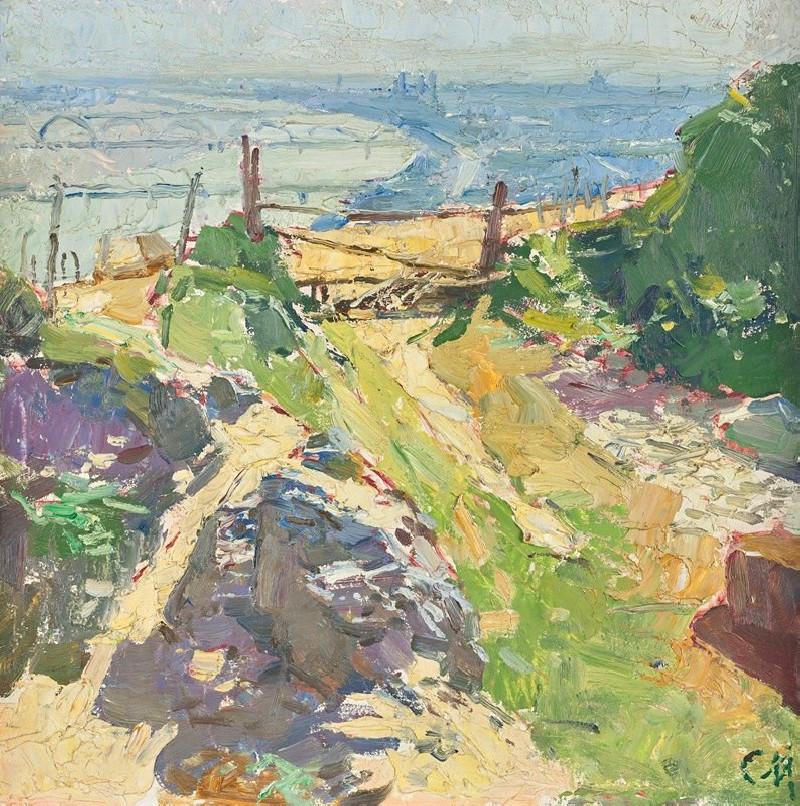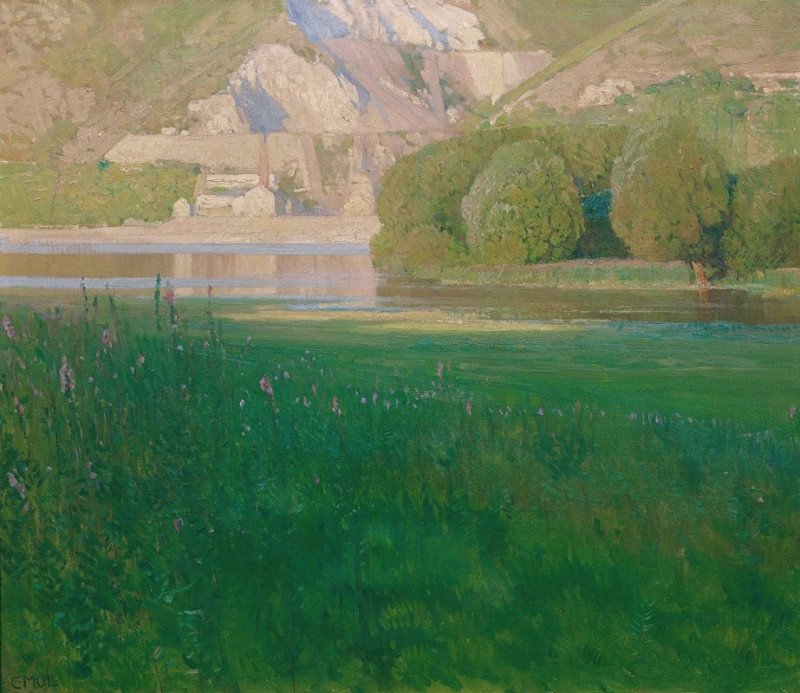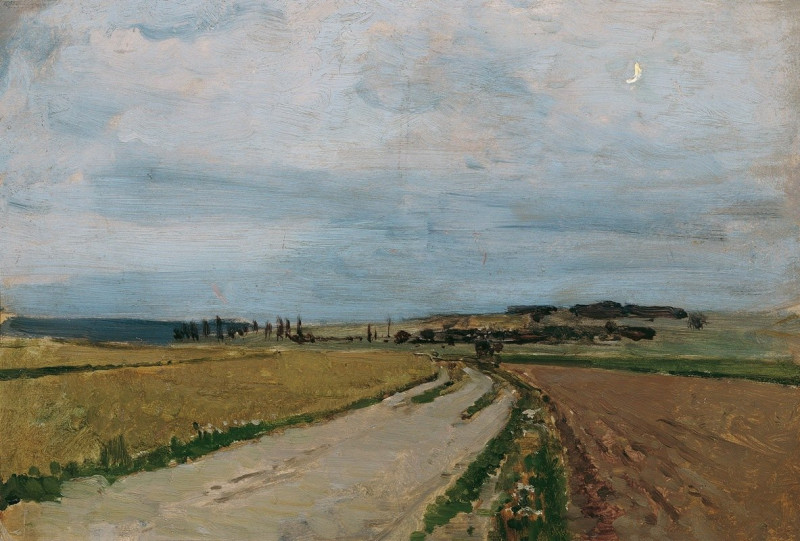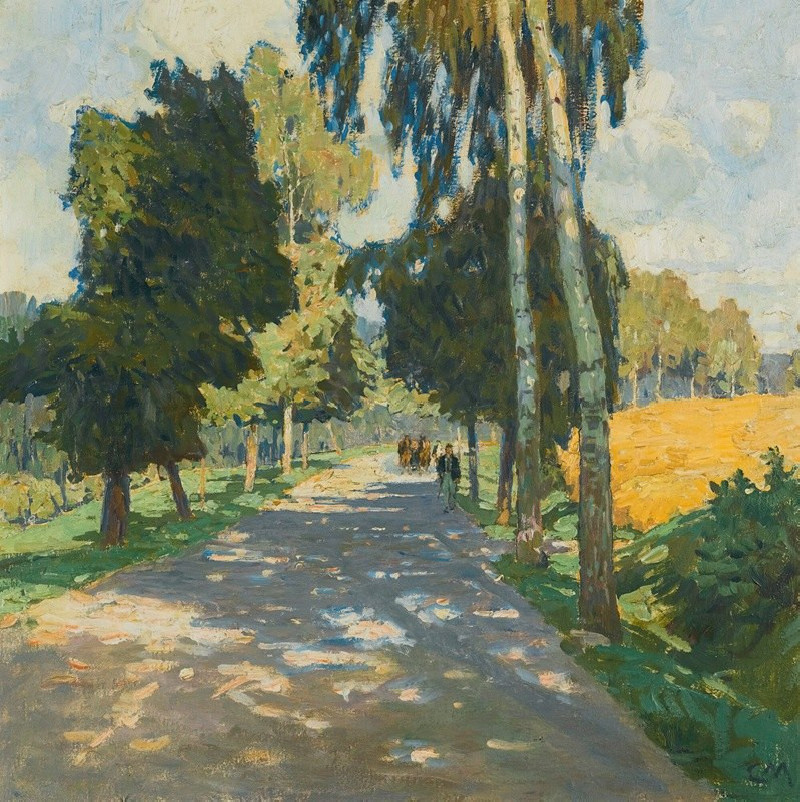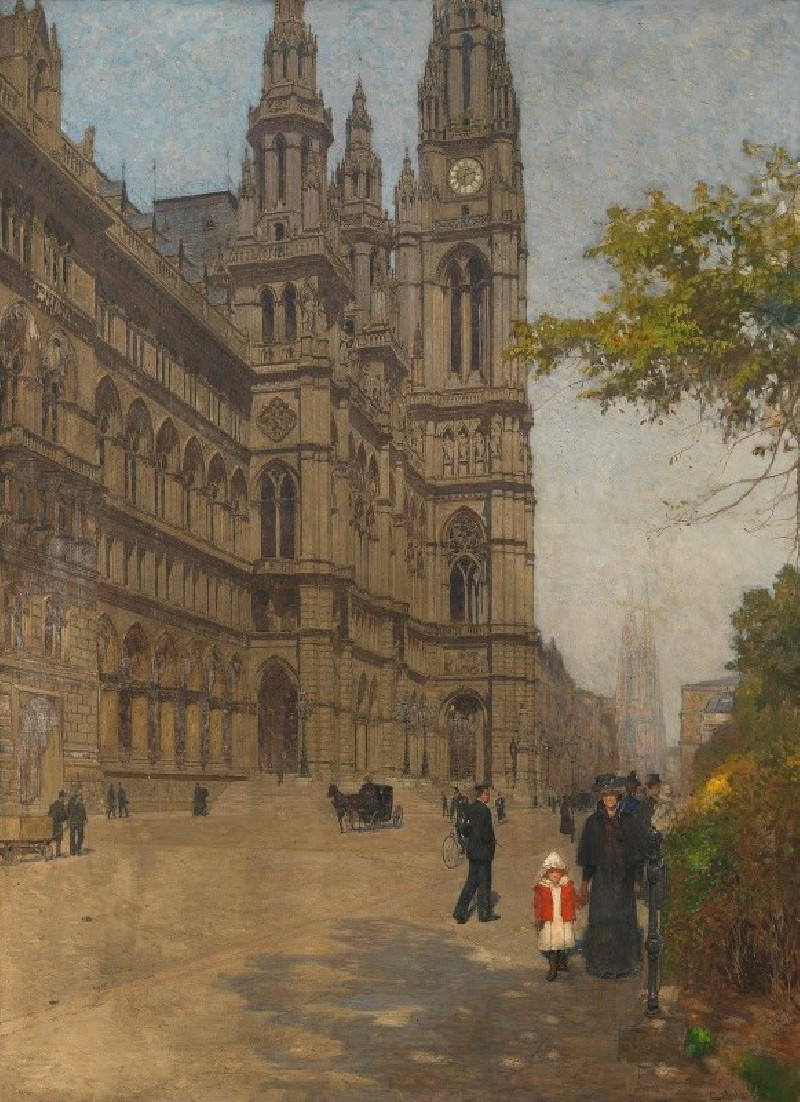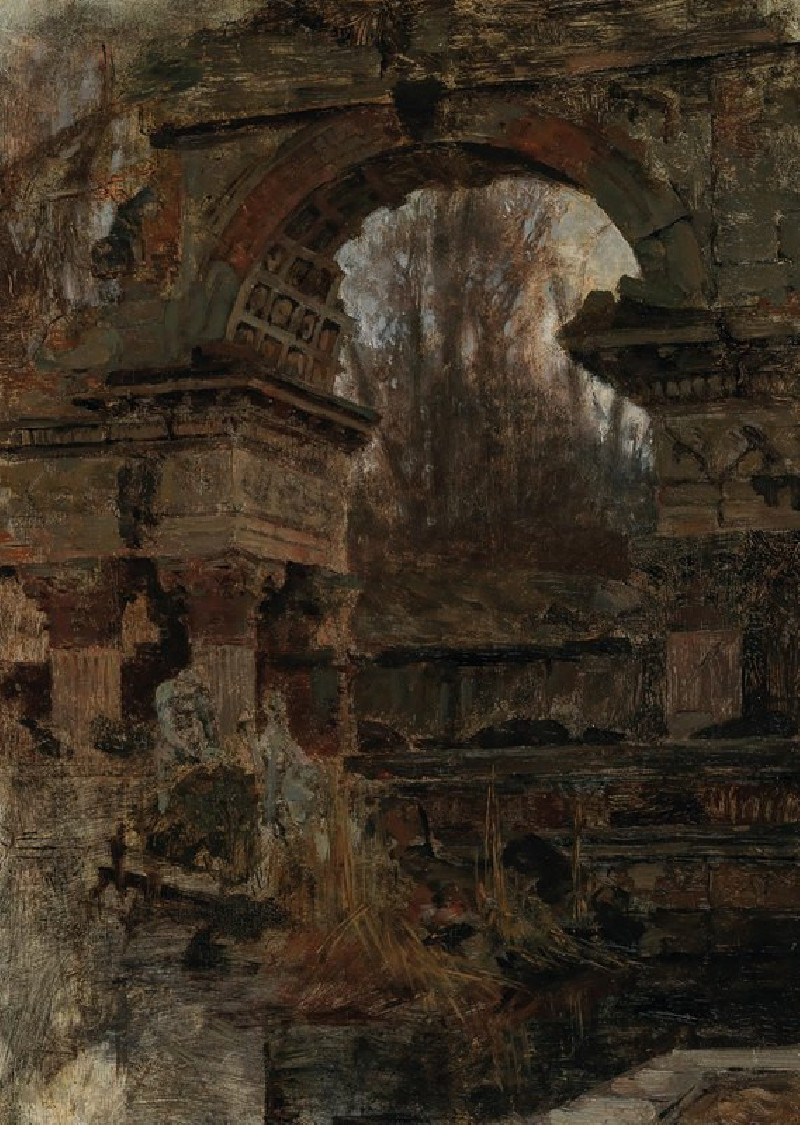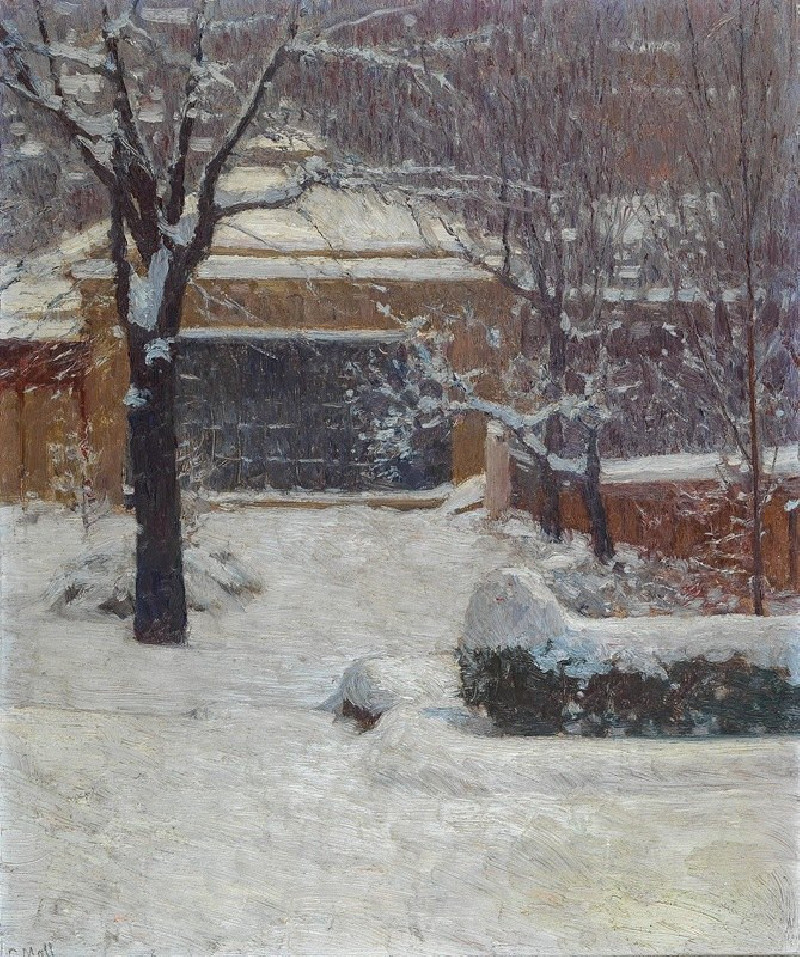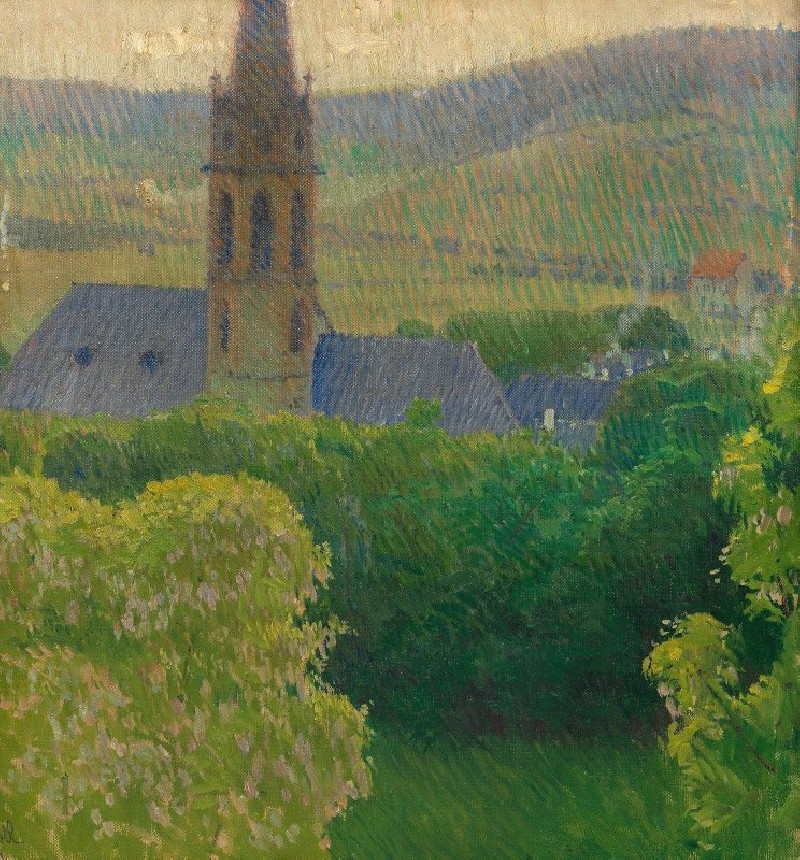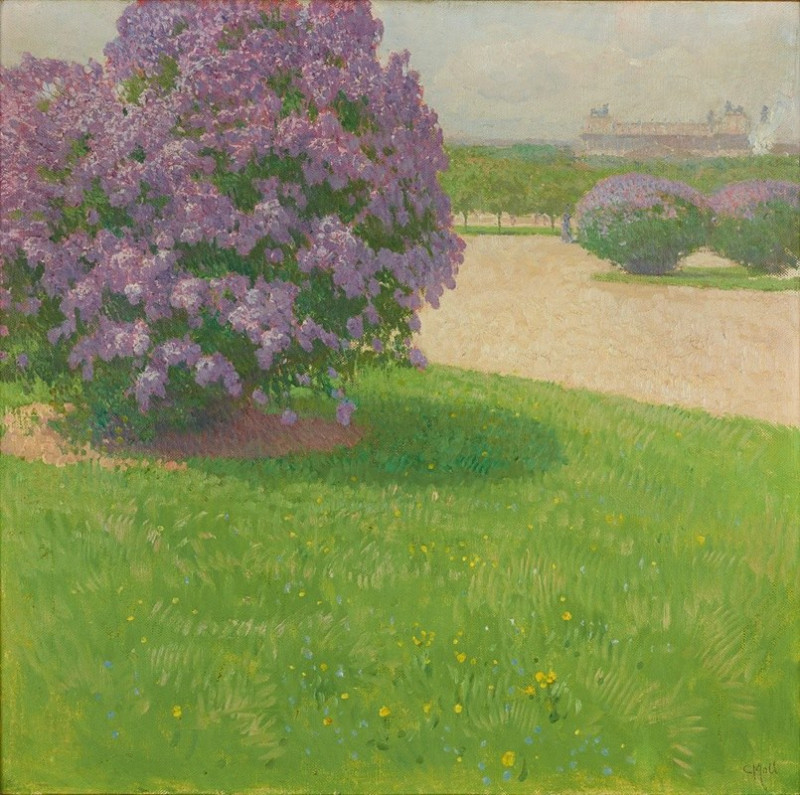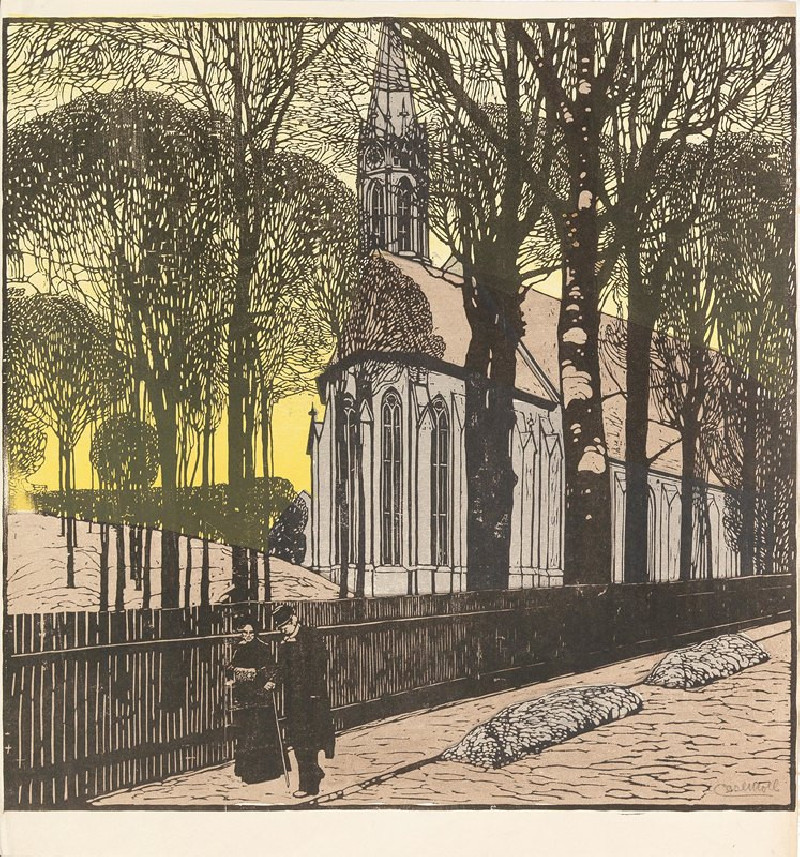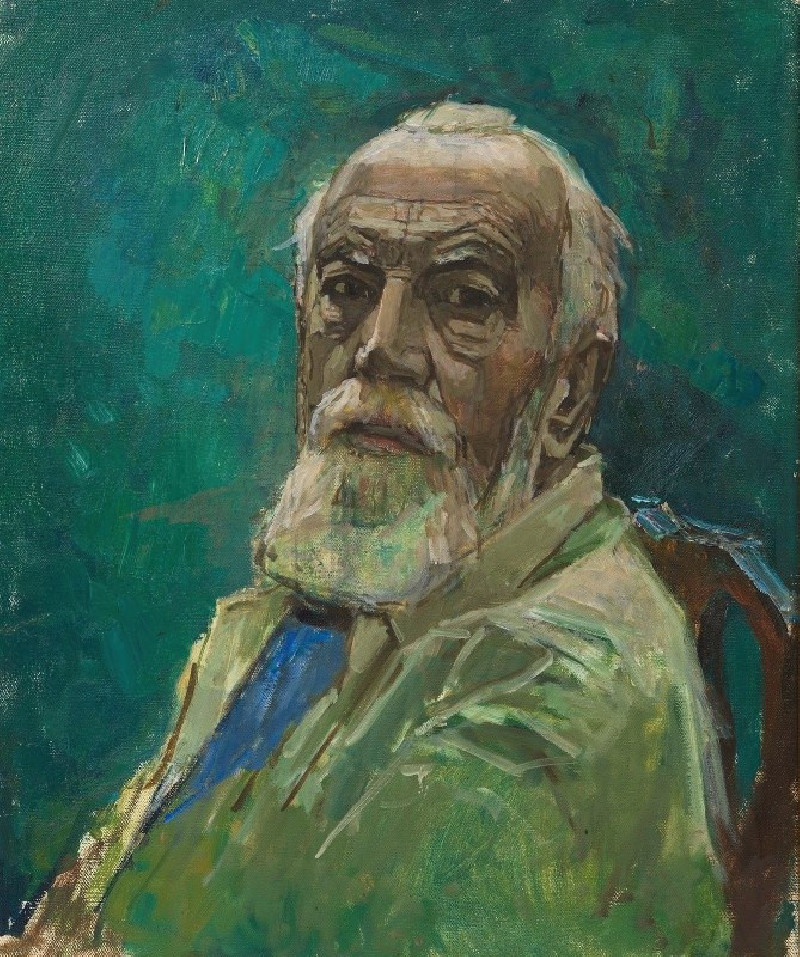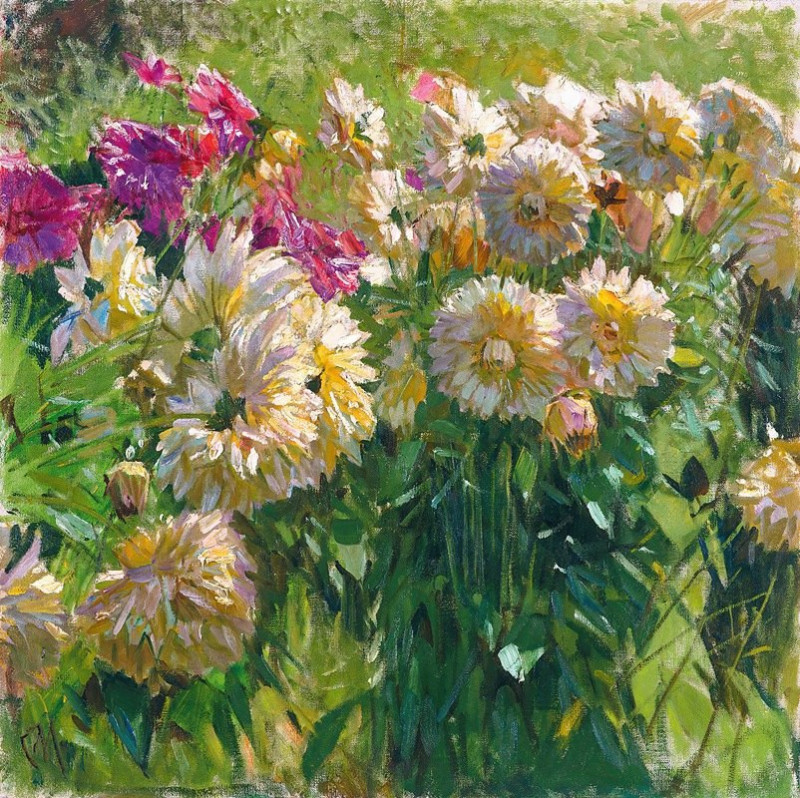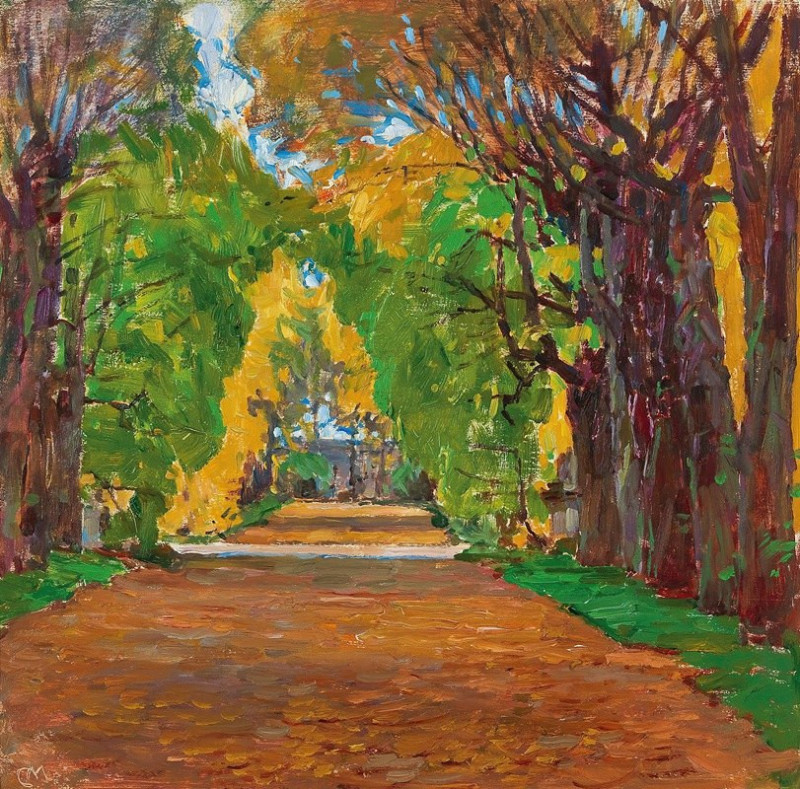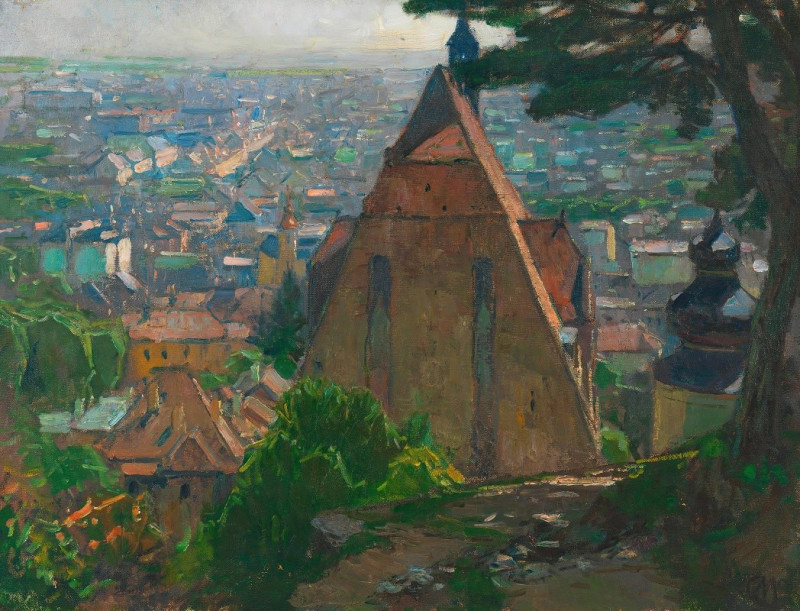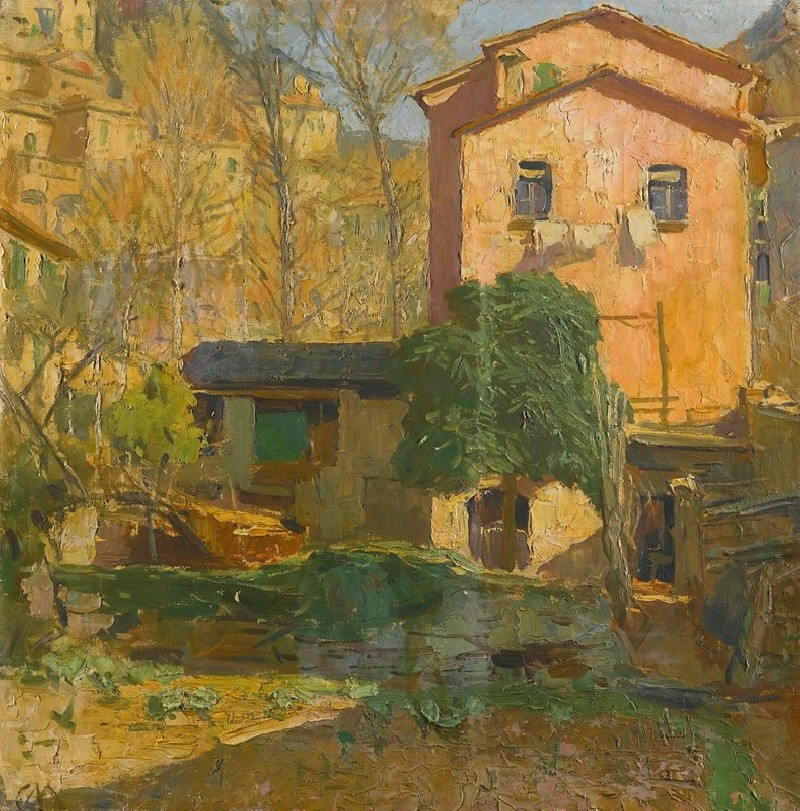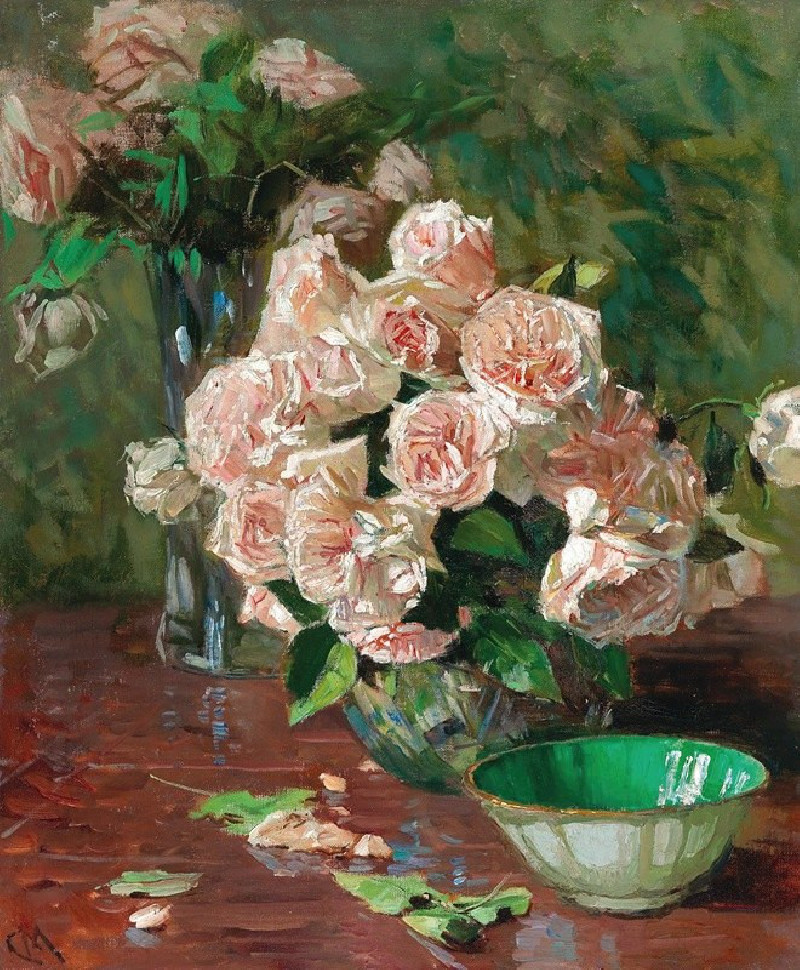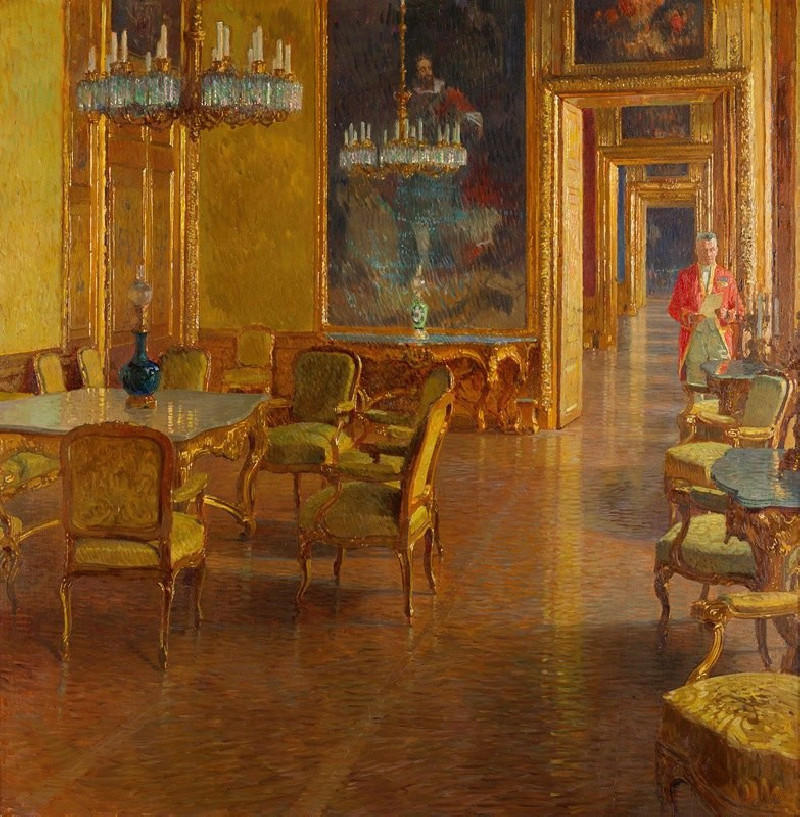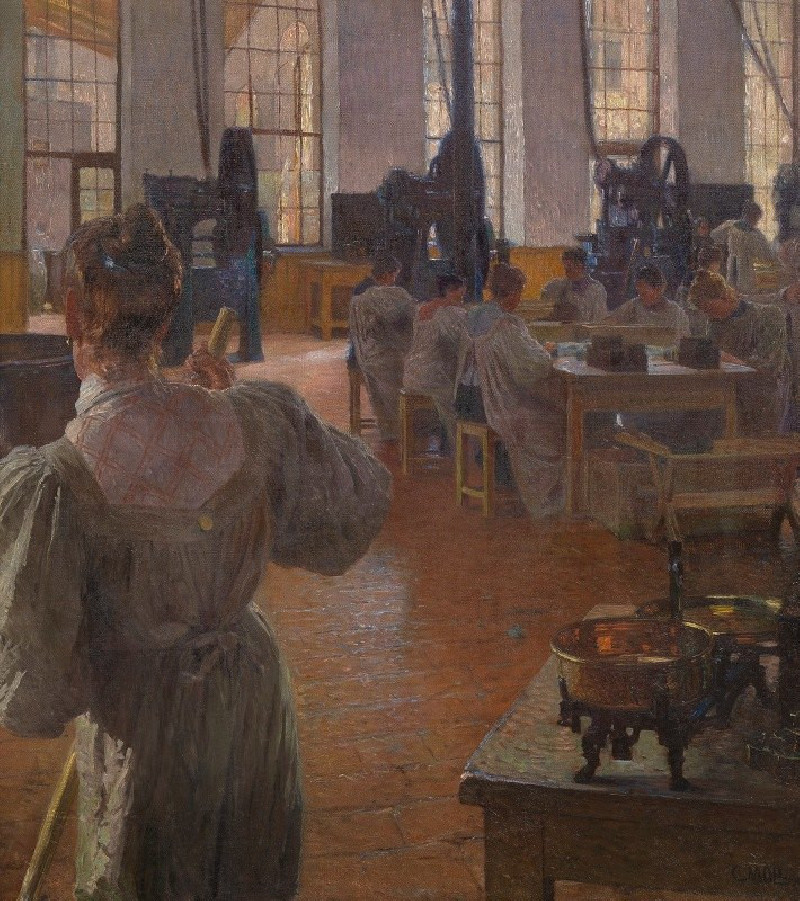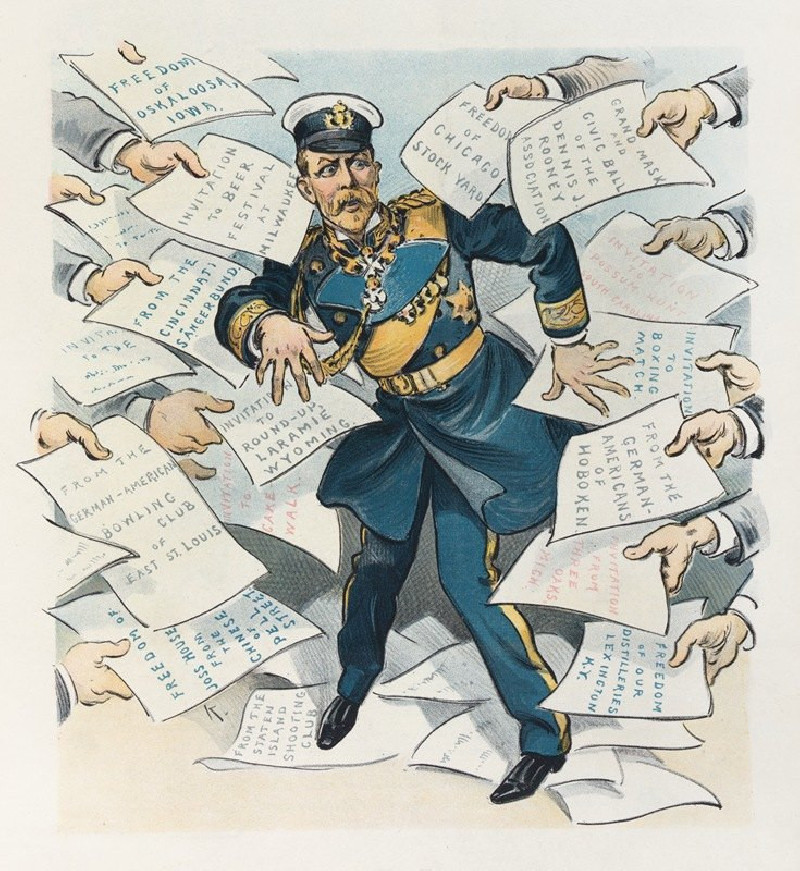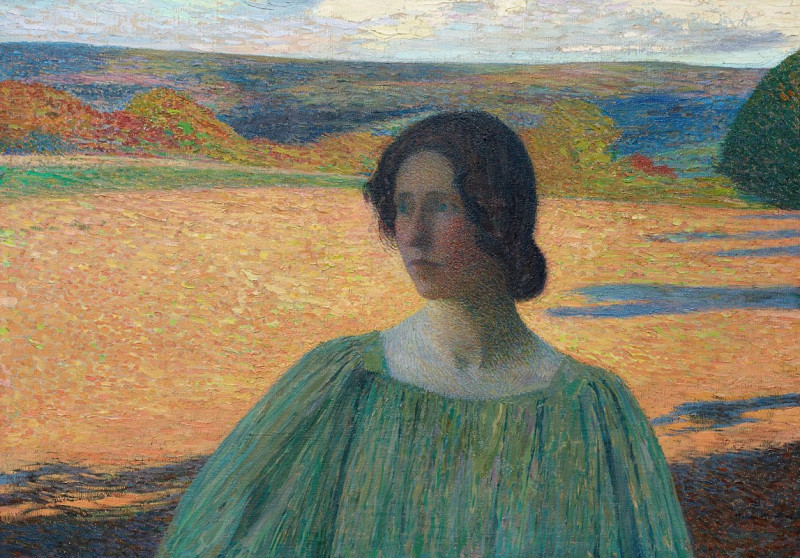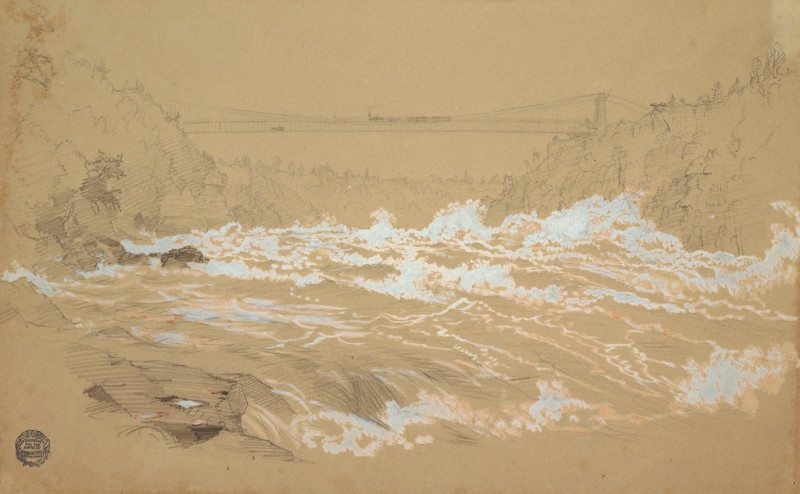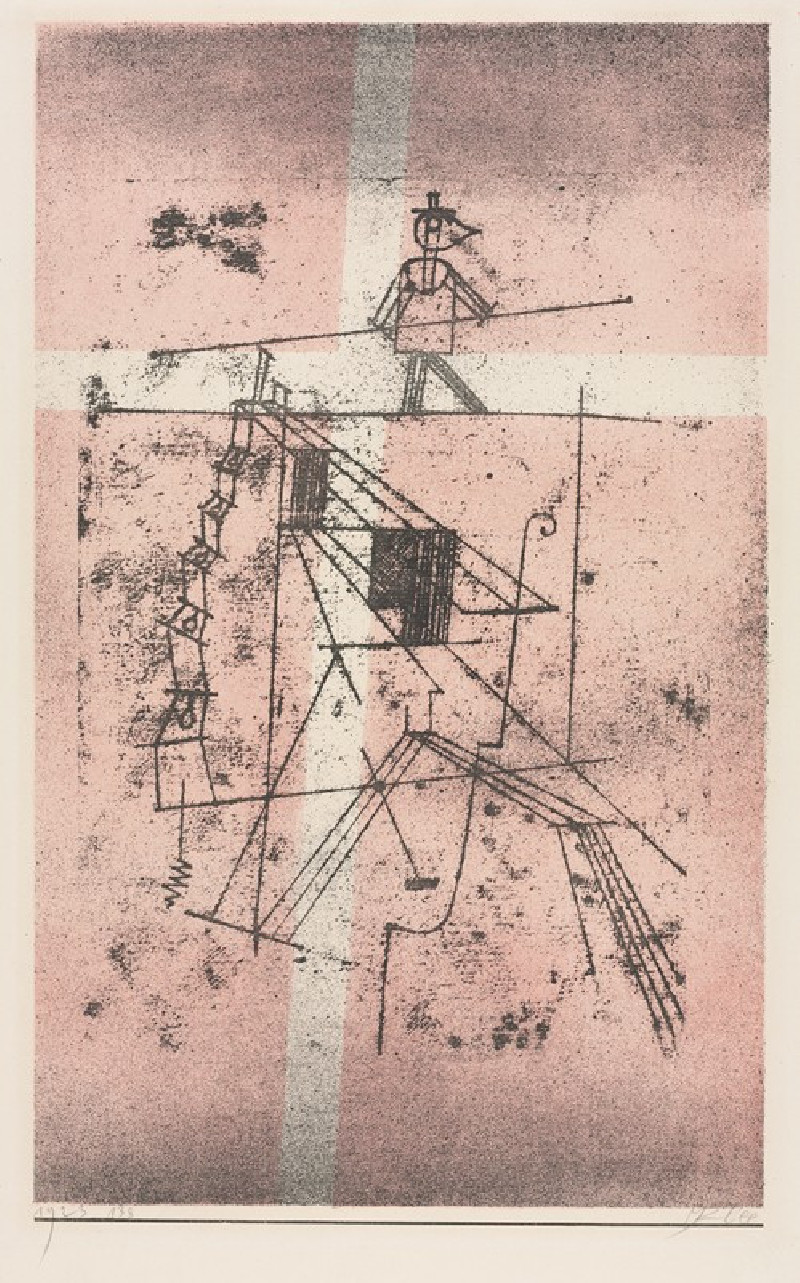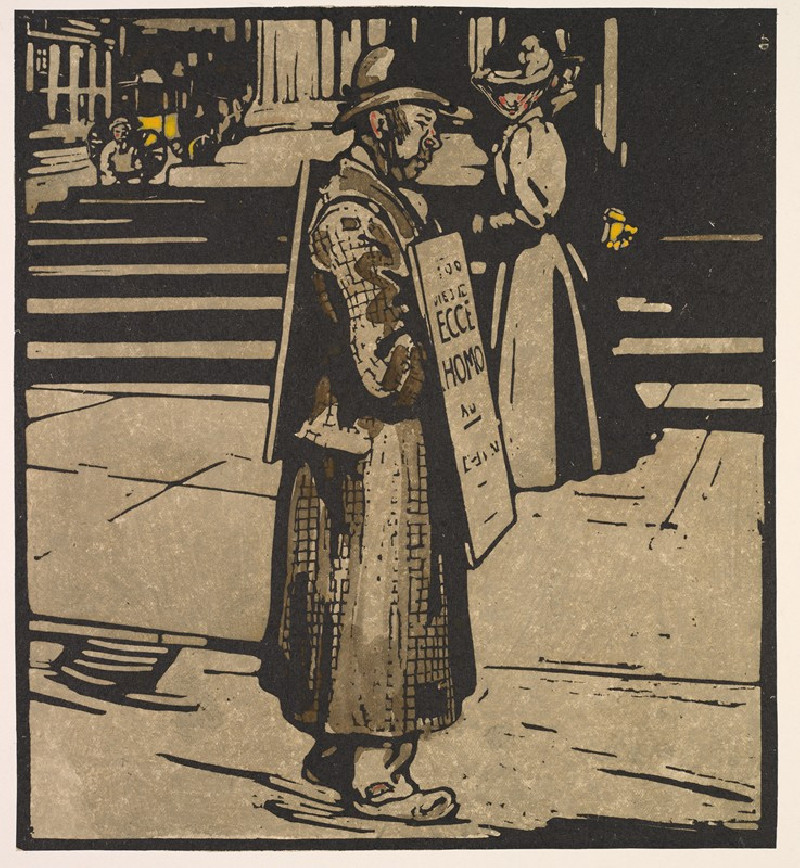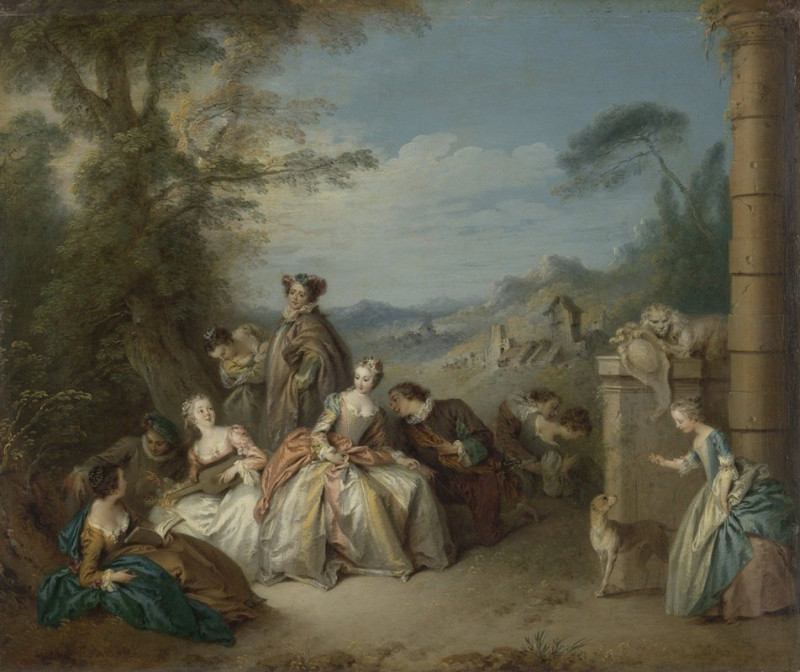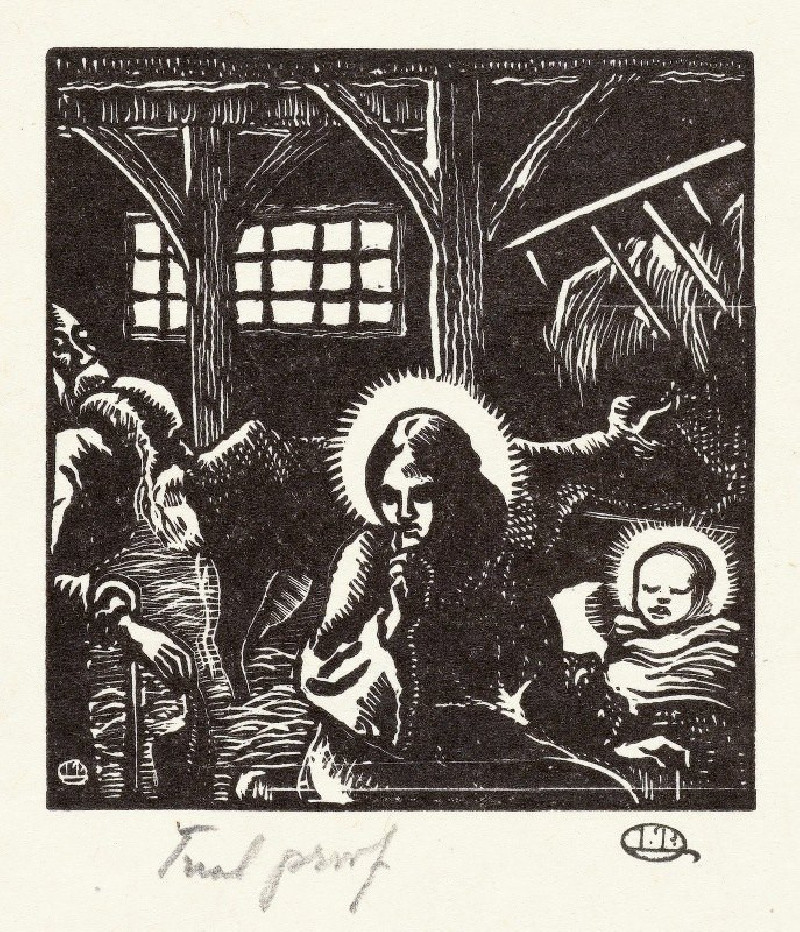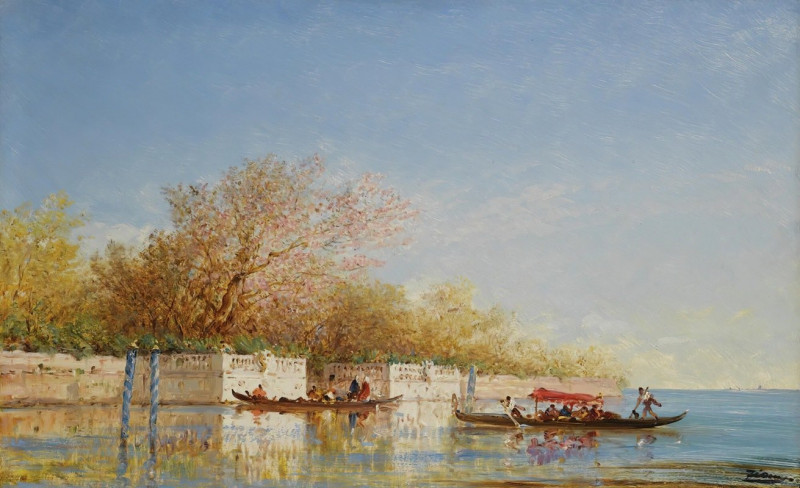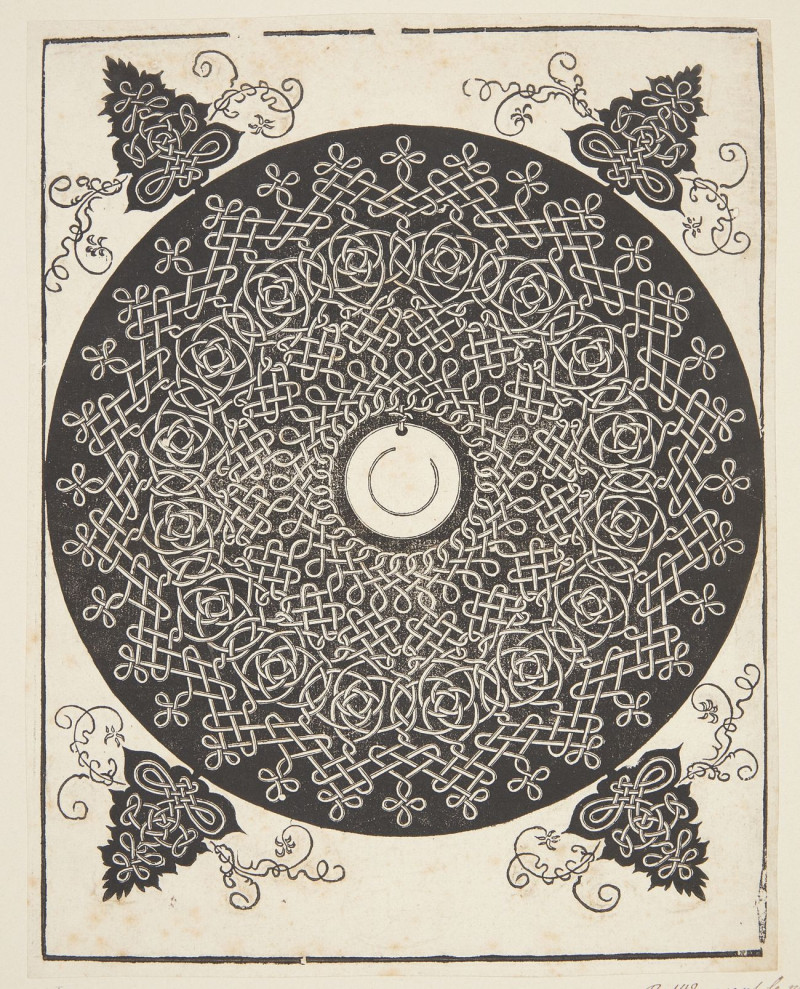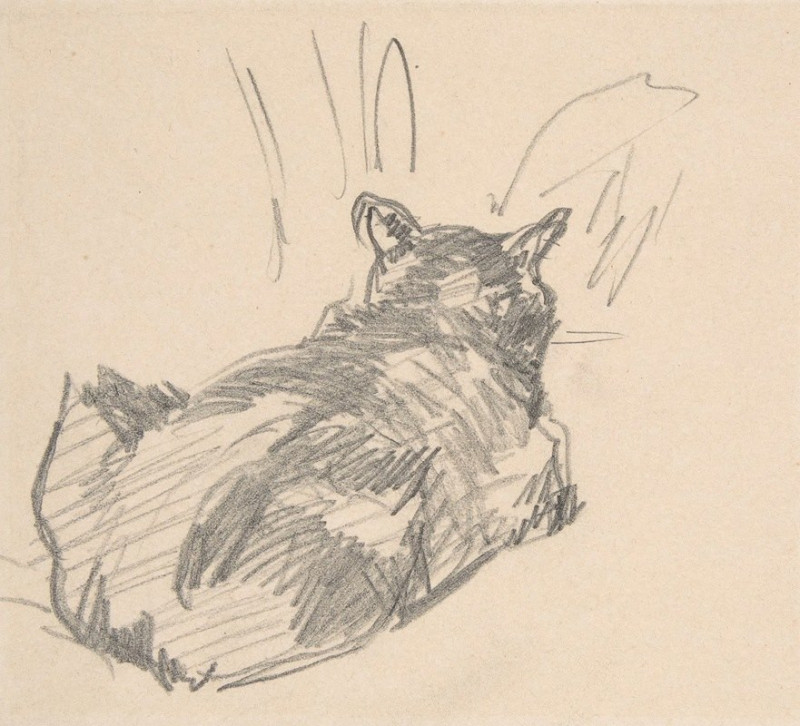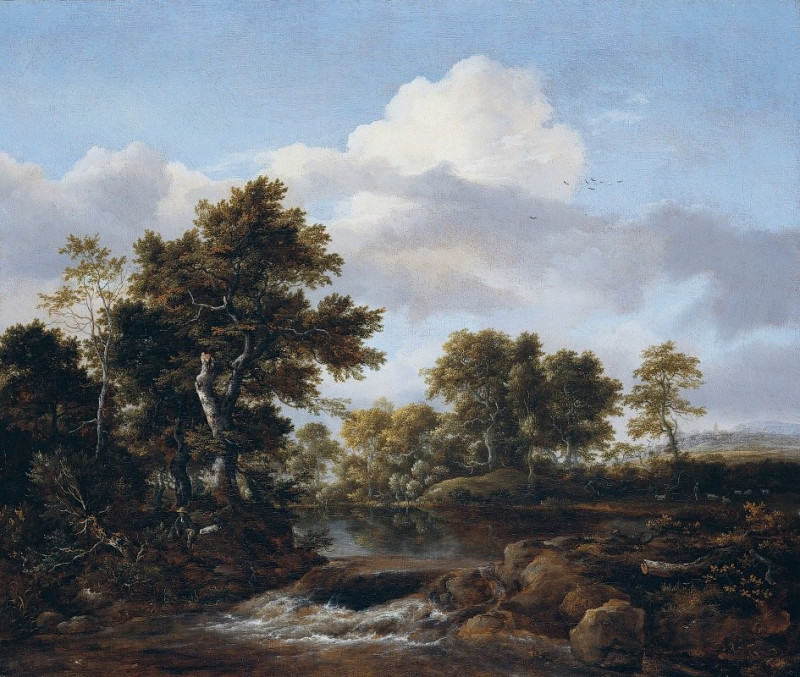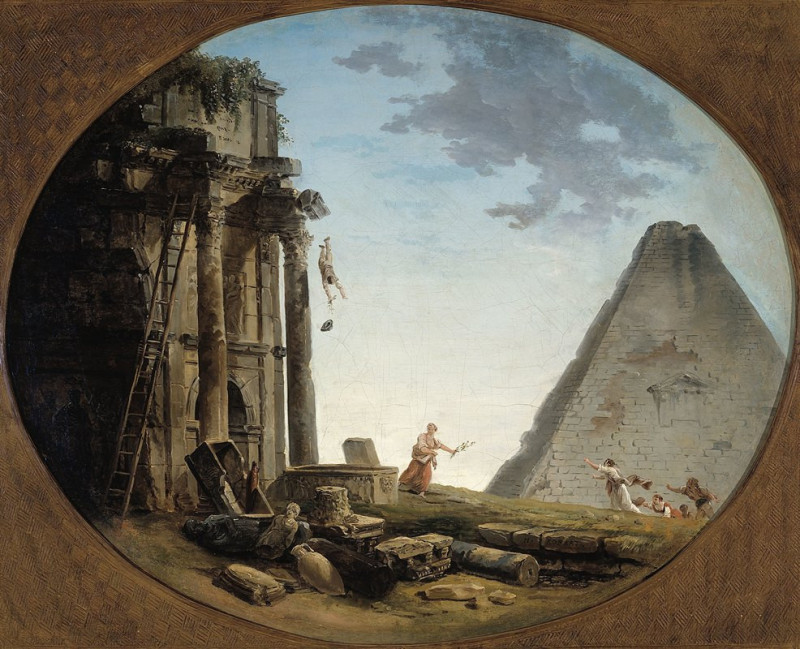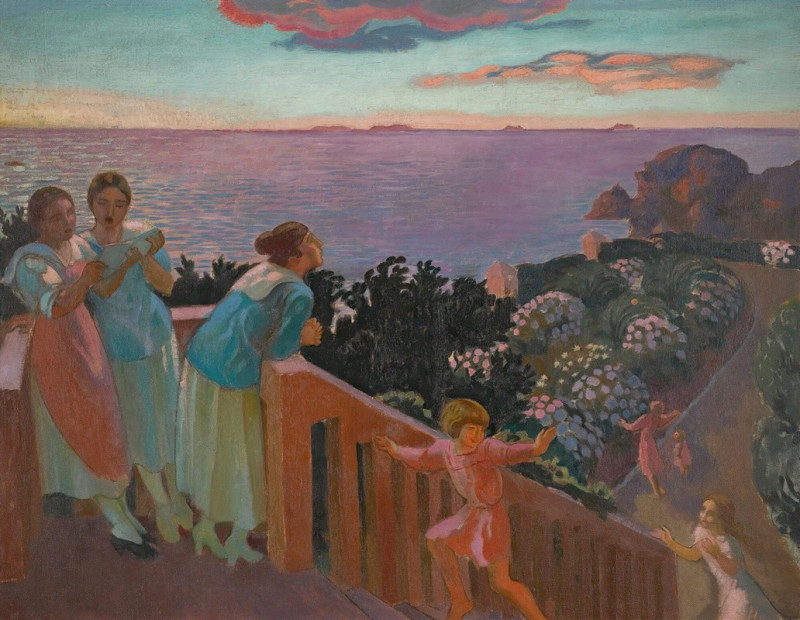Lusthaus, (Prater, Vienna) (c. 1930)
Technique: Giclée quality print
Recommended by our customers
More about this artwork
"Lusthaus, (Prater, Vienna)" by Carl Moll captures a vivid, bustling scene at the Prater, a popular public park in Vienna. Created around 1930, this painting showcases Moll's signature style, characterized by vibrant color use and dynamic brushwork.The centerpiece of the painting is the ‘Lusthaus’, a striking yellow building set against a backdrop of lush green trees. This historic structure, originally a hunting lodge, radiates under the sunlight, its facade adorned with open windows and a distinctive red-tiled roof that peeps through the canopy of dense foliage.Moll's composition brings life to the Prater with scattered figures of visitors around the building, enjoying a leisurely day. Some of them can be seen strolling along the shaded paths while others gather around the entrance, perhaps waiting or just engaging in casual conversation. The brushstrokes suggest movement and a breezy day, with light and shadow playing across the ground and trees, adding depth and texture to the scene.
Delivery
Returns
Carl Julius Rudolf Moll (23 April 1861 – 13 April 1945) was an Austrian art nouveau painter active in Vienna at the start of the 20th century. He was one of the artists of the Vienna Secession who took inspiration from the pointillist techniques of French Impressionists. He was an early supporter of the Nazis and committed suicide as Soviet forces approached Vienna at the end of World War II.

